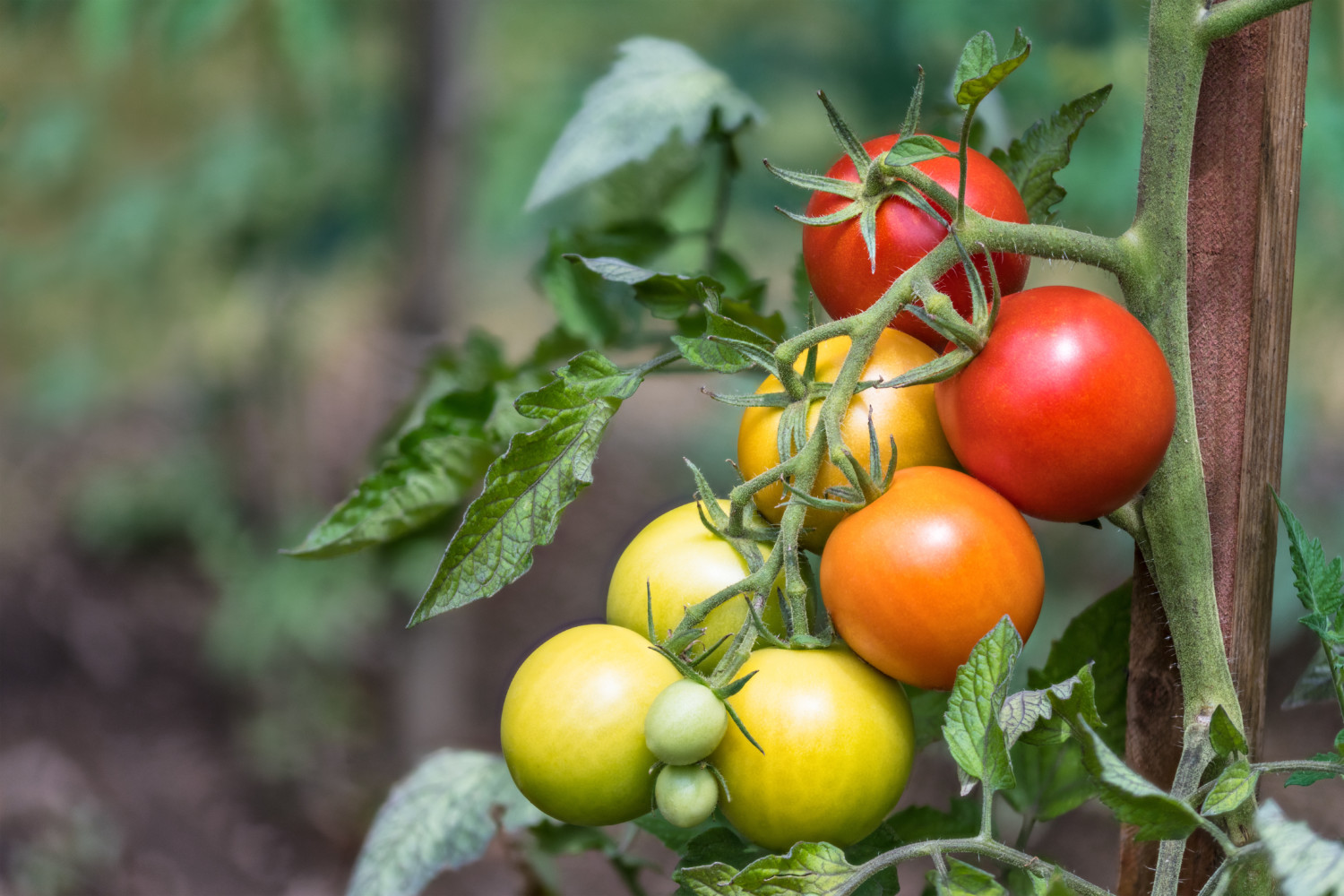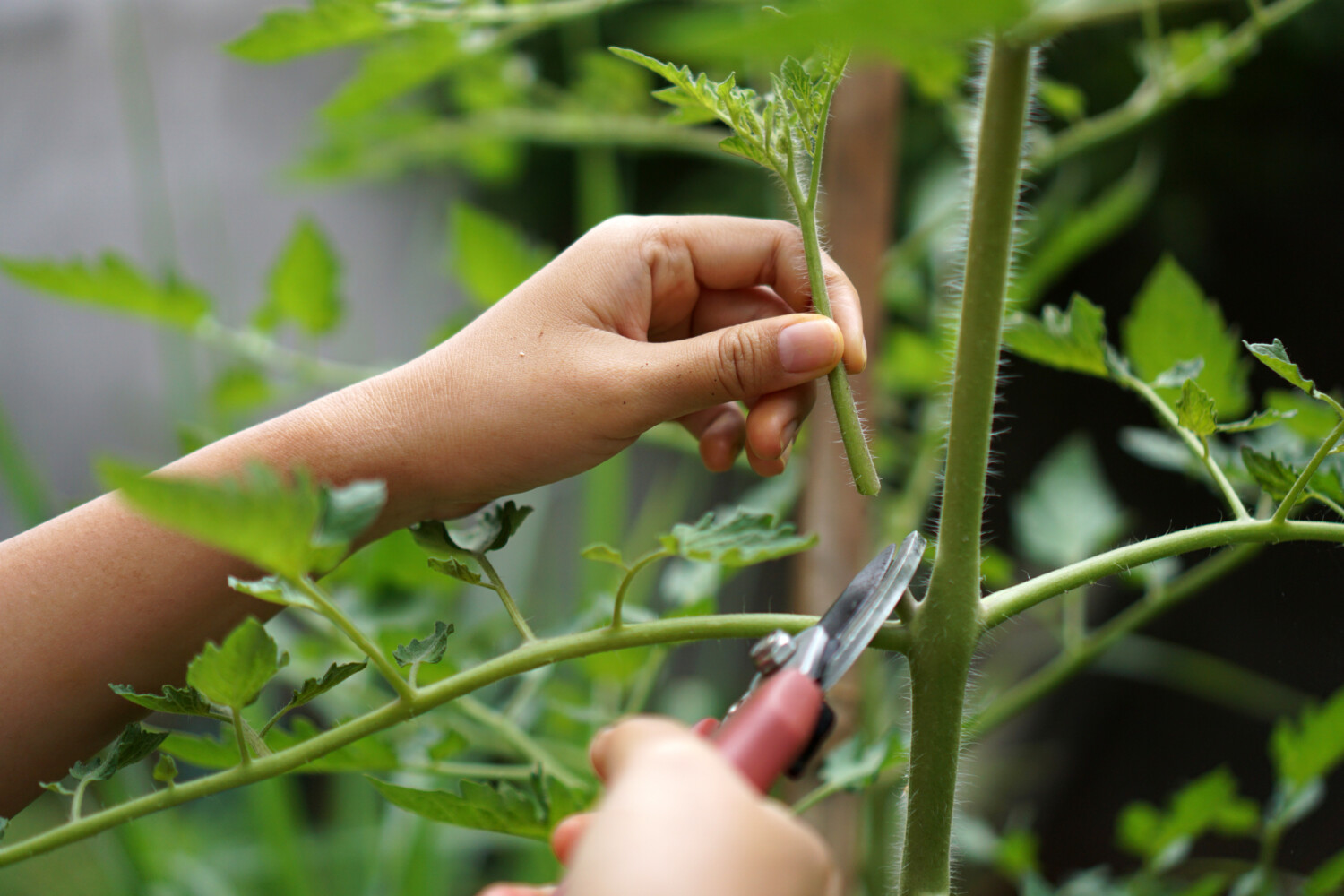A popular ingredient to many dinnertime favorites, there’s nothing quite like a ripe, juicy tomato that’s been freshly plucked off the vine. Growing tomatoes at home can be a fun and exciting summertime hobby, but tomato plants can take on a mind of their own and become a jumbled mess of intertwined stems and leaves if gardeners don’t prune them regularly. Pruning doesn’t only keep plants well sorted out, it also helps speed ripening and can help support a better harvest.
When you start growing your tomatoes, find out its species to see if it’s determinate or indeterminate. Only prune indeterminate varieties, which continue to vine and produce fruit through the summer.

What to Know Before You Start Pruning
To prevent the spread of plant diseases such as powdery mildew or blight, start with sharp, clean sheers. Sanitize your scissors before you begin with a 10% bleach solution (one part bleach to nine parts water). You can also add your disinfectant solution to a spray bottle and mist your blades as you go to sanitize them after pruning each plant (just be sure to bring a rag to wipe them dry after each clean).
Diseases are more likely to occur later in the season. During this time, be sure to dispose of any pruned parts in the trash. Don’t leave them on the ground to decompose or put them in the compost.
You may want to wear gloves and long sleeves while pruning as both tomato leaves and stems can cause allergic reactions to sensitive skin like redness, itching and burning.
MORE: Study says gardening can lower your risk of cardiovascular disease

Work from the Bottom Up
Indeterminate tomato varieties will grow until a cold snap happens. In some climates, this could mean a growing season that’s several months along. To keep the bottom of the plant healthy throughout this time, start by snipping any branches that touch the dirt to lessen the chance of soil-borne diseases. It will also improve air circulation around the plant.
Next, remove any suckers (side shoots) that appear below the first flower on the plant. These are the branches that look like little Vs. For smaller ones, pinch them off with your fingers, a process called simple pruning.
When these branches get too large, they can weigh down their counterparts and tip the plant over, causing the stem to break. For these larger suckers, you can use a technique called Missouri pruning where you snip off the top of the sucker and leave one or two sets of leaves behind. This way, if the pinched-off or snipped area were to become infected with disease, it’s farther away from the main stem. It’s also less shocking to the plant. If you were to slice the entire stem, you’d leave a wide entry point for disease that’s close to the main stem. By snipping these energy zappers, you might be able to grow bigger tomatoes, too.
MORE: 5 gardening mistakes that could spell doom for your plants

While you’re pruning, don’t worry that you’re taking away too much foliage. Thinning the tomato plant is crucial for growth. Too many leaves can create shade and block the plant from growing properly. If the leaves don’t get the right amount of sunlight, they will turn yellow and drop. Then the plant will spend its energy reproducing more leaves rather than growing and riping tomatoes.
Lastly, look for dead, damaged or diseased leaves to snip. Remember to pull off any green tomatoes before the first frost and bring them inside to finish ripening.
This story originally appeared on Simplemost. Check out Simplemost for additional stories.


